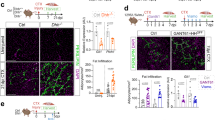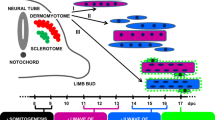Abstract
Our current understanding of muscle and adipose tissue development has been largely restricted to the study of murine myogenic and adipogenic cell lines, since attempts to establish these cell lines from other species have met with only limited success. Here we report that a spontaneously immortalized bovine embryonic fibroblast cell line (BEFS) undergoes differentiation into adipogenic or myogenic lineages when ectopically transduced with PPARγ2 (an adipogenic lineage determinant) or MyoD (a myogenic lineage determinant) and grown in adipogenic and myogenic differentiation culture media (ADCM and MDCM, respectively). We also found that PPARγ2-overexpressing BEFS cells (BEFS-PPARγ2) grown in ADCM with or without the PPARγ2 ligand, troglitazone, preferentially differentiate into adipogenic cells in the presence of ectopic MyoD expression. Ectopic expression of PPARγ2 in the inducible MyoD-overepxressing BEFS cells (BEFS-TetOn-MyoD) completely suppresses myogenic differentiation and leads to a significant increase in adipogenic differentiation, suggesting that the adipogenic differentiation program might be dominant. Therefore, BEFS, BEFS-PPARγ2, and BEFS-TetOn-MyoD would be a valuable biological model for understanding a fundamental principle underlying myogenic and adipogenic development, and for isolating various genetic and chemical factors that enable muscle and adipocyte differentiation.




Similar content being viewed by others
References
Cassar-Malek I, Langlois N, Picard B et al (1999) Regulation of bovine satellite cell proliferation and differentiation by insulin and triiodothyronine. Domest Anim Endocrinol 17:373–388
Choi J, Costa ML, Mermelstein CS et al (1990) MyoD converts primary dermal fibroblasts, chondroblasts, smooth muscle, and retinal pigmented epithelial cells into striated mononucleated myoblasts and multinucleated myotubes. PNAS 87:7988–7992
Conejo R, Valverde AM, Benito M et al (2001) Insulin produces myogenesis in C2C12 myoblasts by induction of NF-kappaB and downregulation of AP-1 activities. J Cell Physiol 186:82–94
Fajas L, Auboeuf D, Raspé E et al (1997) The organization, promoter analysis, and expression of the human PPARγ gene. J Biol Chem 272:8779–18789
Gossen M, Bujard H (1992) Tight control of gene expression in mammalian cells by tetracycline-responsive promoters. Proc Natl Acad Sci USA 89:5547–5551
Greene EA, Allen RE (1991) Growth factor regulation of bovine satellite cells growth in vitro. J Anim Sci 69:146–152
Holst D, Luquet S, Kristiansen K et al (2003) Roles of peroxisome proliferator-activated receptors delta and gamma in myoblast transdifferentiation. Exp Cell Res 288:168–176
Honda H, Rostami A (1989) Expression of major histocompatibility complex class I antigens in rat muscle cultures: the possible developmental role in myogenesis. Proc Natl Acad Sci USA 86:7007–7011
Jin X, Lee JS, Kwak S et al (2006) Myogenic differentiation of p53- and Rb-deficient immortalized and transformed bovine fibroblasts in response to MyoD. Mol Cells 1:206–212
Jin X, Kim JG, Oh MJ et al (2007) Opposite roles of MRF4 and MyoD in cell proliferation and myogenic differentiation. Biochem Biophys Res Commun 364:476–482
Kokta TA, Dodson MV, Gertler A et al (2004) Intercellular signaling between adipose tissue and muscle tissue. Domest Anim Endocrinol 27:303–331
Lattanzi L, Salvatori G, Coletta M et al (1998) High efficiency myogenic conversion of human fibroblasts by adenoviral vector-mediated MyoD gene transfer. An alternative strategy for ex vivo gene therapy of primary myopathies. J Clin Invest 101:2119–2128
Ren D, Collingwood TN, Rebar EJ, Wolffe AP, Camp HS (2002) PPARγ knockdown by engineered transcription factors: exogenous PPARγ2 but not PPARγ1 reactivates adipogenesis. Genes Dev 16:27–32
Rosen ED, Spiegelman BM (2000) Molecular regulation of adipogenesis. Annu Rev Cell Dev Biol 16:145–171
Schmid C, Steiner T, Froesch ER (1983) Preferential enhancement of myoblast differentiation by insulin-like growth factors (IGF-I and IGF-II) in primary cultures of chicken embryonic cells. FEBS Lett 161:117–121
Stewart CEH, Rotwein P (1996) Insulin-like growth factor-2 is an autocrine survival factor for differentiating myoblasts. J Biol Chem 271:11330–11338
Teboul L, Gaillard D, Staccini L, Inadera H, Amri EZ, Grimaldi PA (1995) Thiazolidinediones and fatty acids convert myogenic cells into adipose-like cells. J Biol Chem 270:28183–28187
Weintraub H, Tapscott SJ, Davis RL, Thayer MJ, Adam MA, Lassar AB, Miller AD (1989) Activation of muscle specific genes in pigment, nerve, fat, liver, and fibroblast cell lines by forced expression of MyoD. Proc Natl Acad Sci USA 86:5434–5438
Wright WE, Sassoon DA, Lin VK (1989) Myogenin, a factor regulating myogenesis, has a domain homologous to MyoD. Cell 56:607–617
Yki-Järvinen H (2004) Thiazolidinediones. N Engl J Med 351:1106–1118
Zhu Y, Qi C, Korenberg JR, Chen XN, Noya D, Rao MS, Reddy JK (1995) Structural organization of mouse peroxisome proliferator-activated receptor γ (mPPARγ) gene: alternative promoter use and different splicing yield two mPPARγ isoforms. Proc Natl Acad Sci USA 92:7921–7925
Acknowledgments
This work was supported by grants (Code#20080401034047 and #20050301034441) from Bio-Green 21 Program, Rural Development Administration, Republic of Korea (to S.-C. Kim and H. Kim), and by Hallym University Research Fund, 2007 (HRF-2007-042; to S.-C. Kim).
Author information
Authors and Affiliations
Corresponding authors
Additional information
Jin Long Yin and Xun Jin contributed equally to this study.
Rights and permissions
About this article
Cite this article
Yin, J., Jin, X., Beck, S. et al. In vitro myogenic and adipogenic differentiation model of genetically engineered bovine embryonic fibroblast cell lines. Biotechnol Lett 32, 195–202 (2010). https://doi.org/10.1007/s10529-009-0142-y
Received:
Revised:
Accepted:
Published:
Issue Date:
DOI: https://doi.org/10.1007/s10529-009-0142-y




